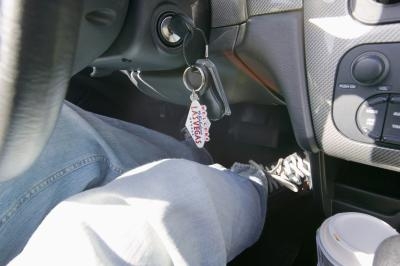
The throttle position sensor, or TPS, is located on the side of the throttle body, attached with small metric steel screws. This sensor measures the angle of the throttle butterfly and sends this information to the powertrain control module, or PCM. A faulty TPS will provide the PCM with incorrect or insufficient information about the throttle angle. An automotive scan tool connected to the vehicle is required to determine whether or not the TPS is bad.
Apply the parking brake, shift the vehicle into park (automatic) or first gear (manual), and turn off the engine. Turn on the ignition but don't re-start the engine.
Connect an automotive scan tool to the vehicle's diagnostic data port, usually located underneath the driver's side dashboard area.
Power on the scan tool and choose "PCM" from the main menu. Choose "Live Data" from the PCM sub-menu. Select "TPS" from the Live Data menu.
Look at the reading on the scan tool. When the accelerator is not depressed it should read "0%."
Slowly press the accelerator to the floor. As it descends to the floor the reading on the scan tool should gradually increase to read at "100%" once the pedal reaches the floor. If the scan tool display reads "0%" the entire time or does not respond to the movement of the pedal then the throttle position sensor is faulty and must be replaced.